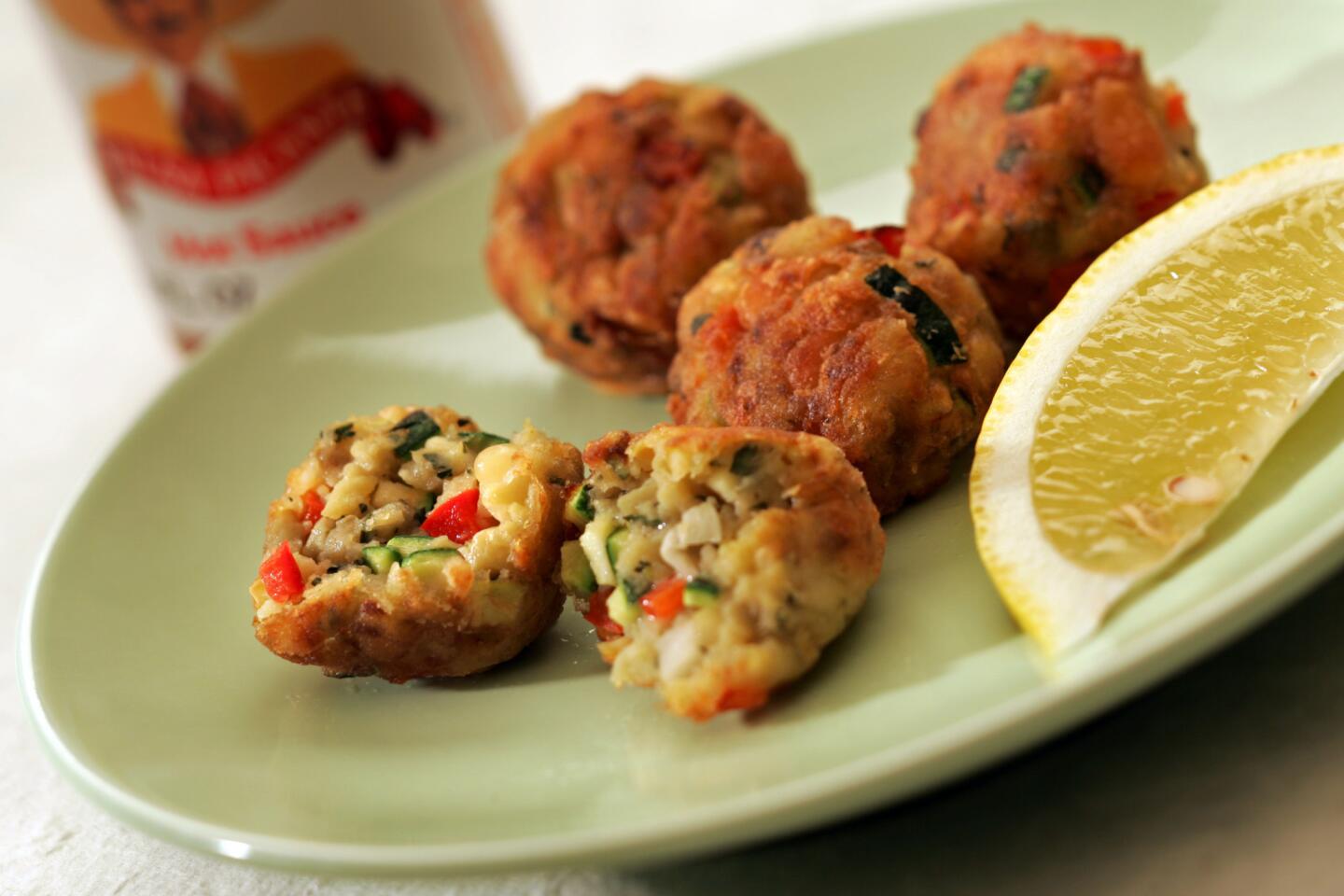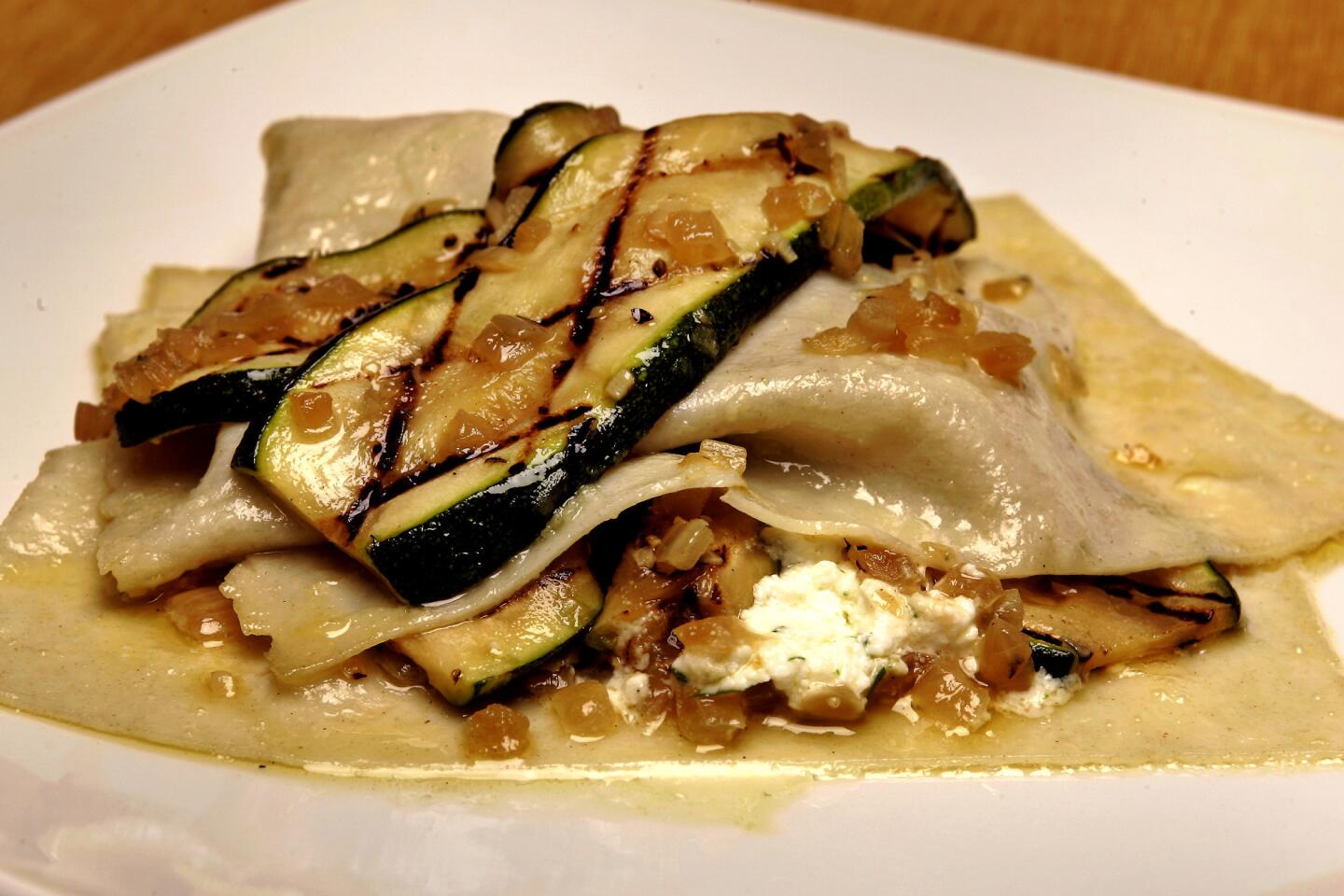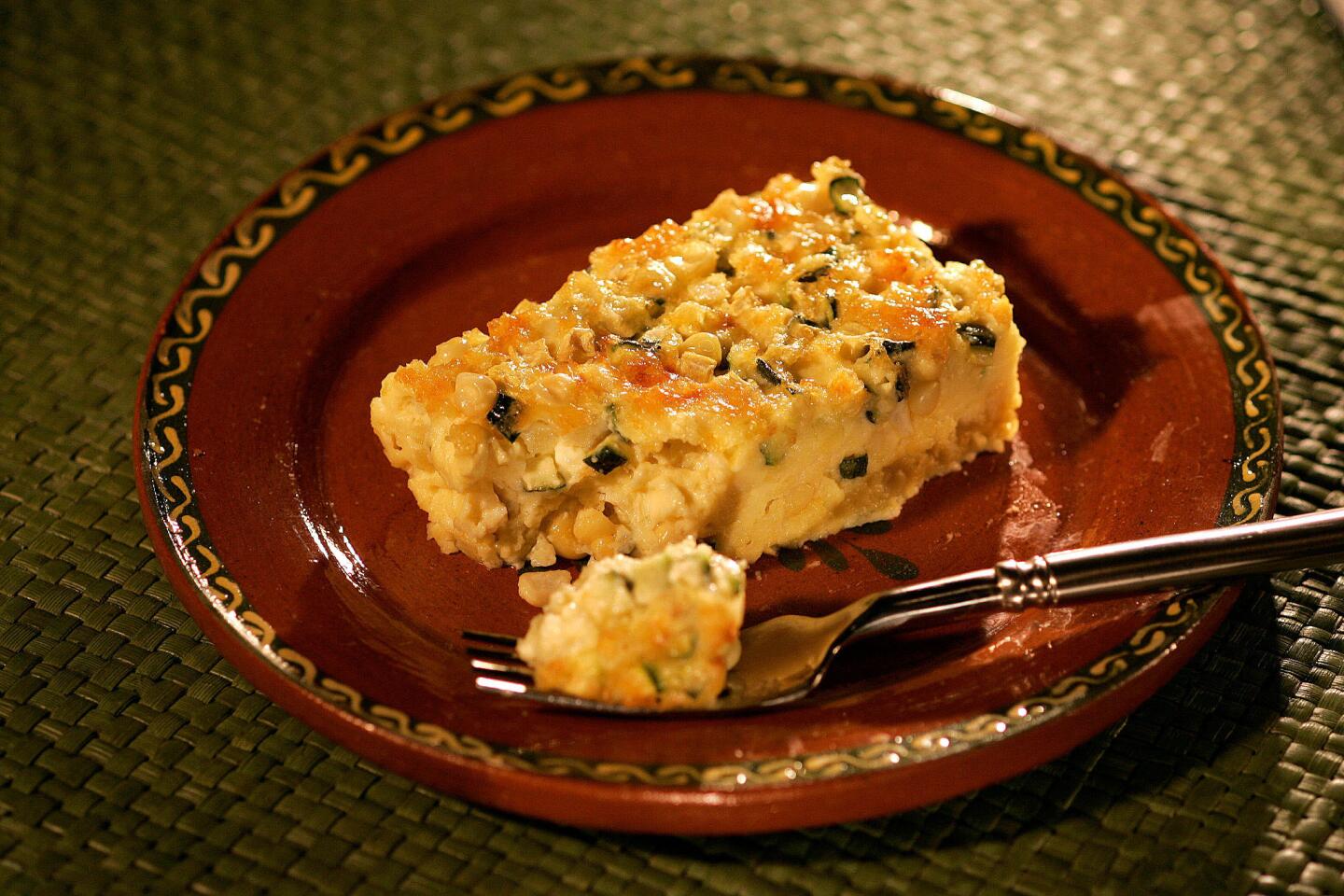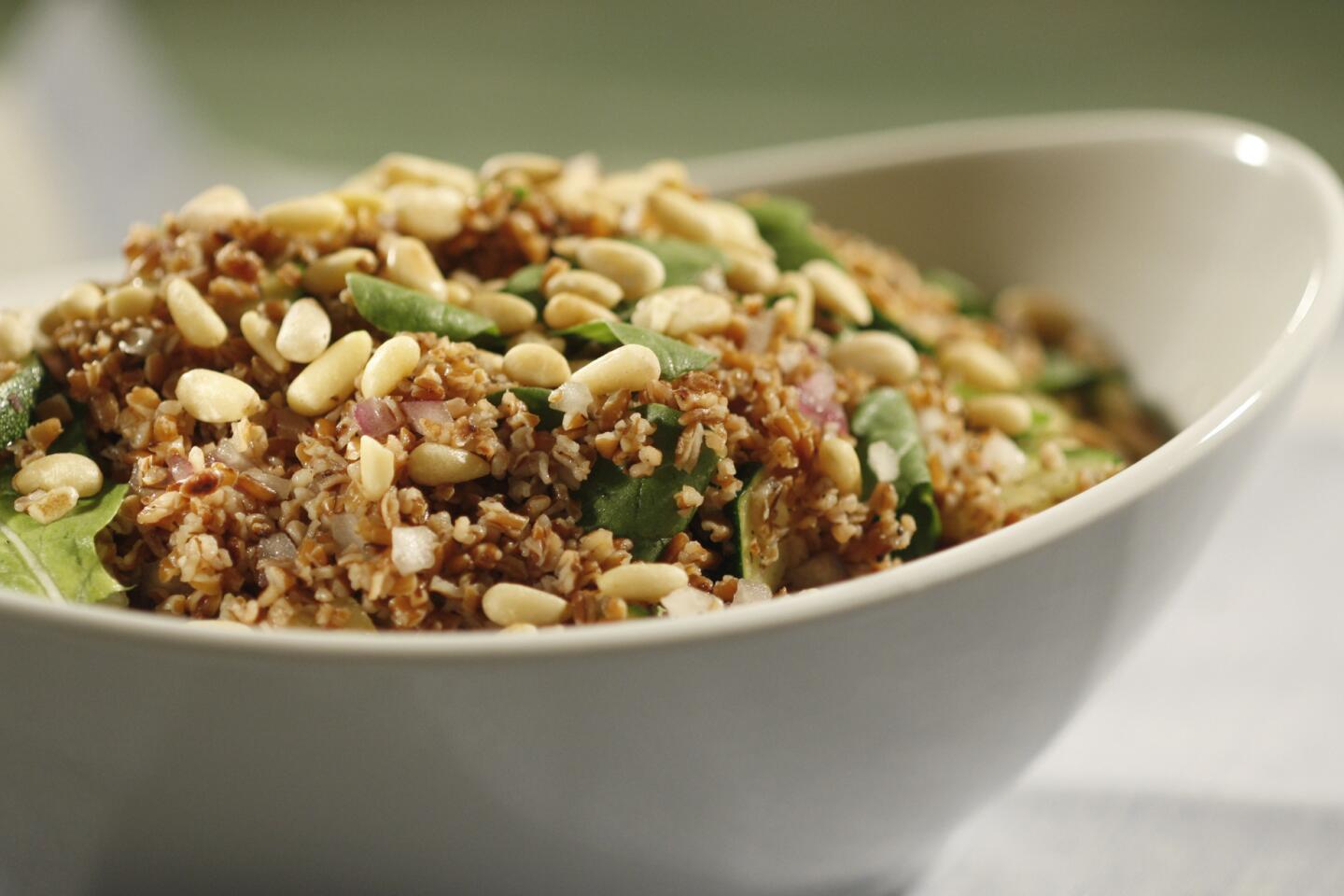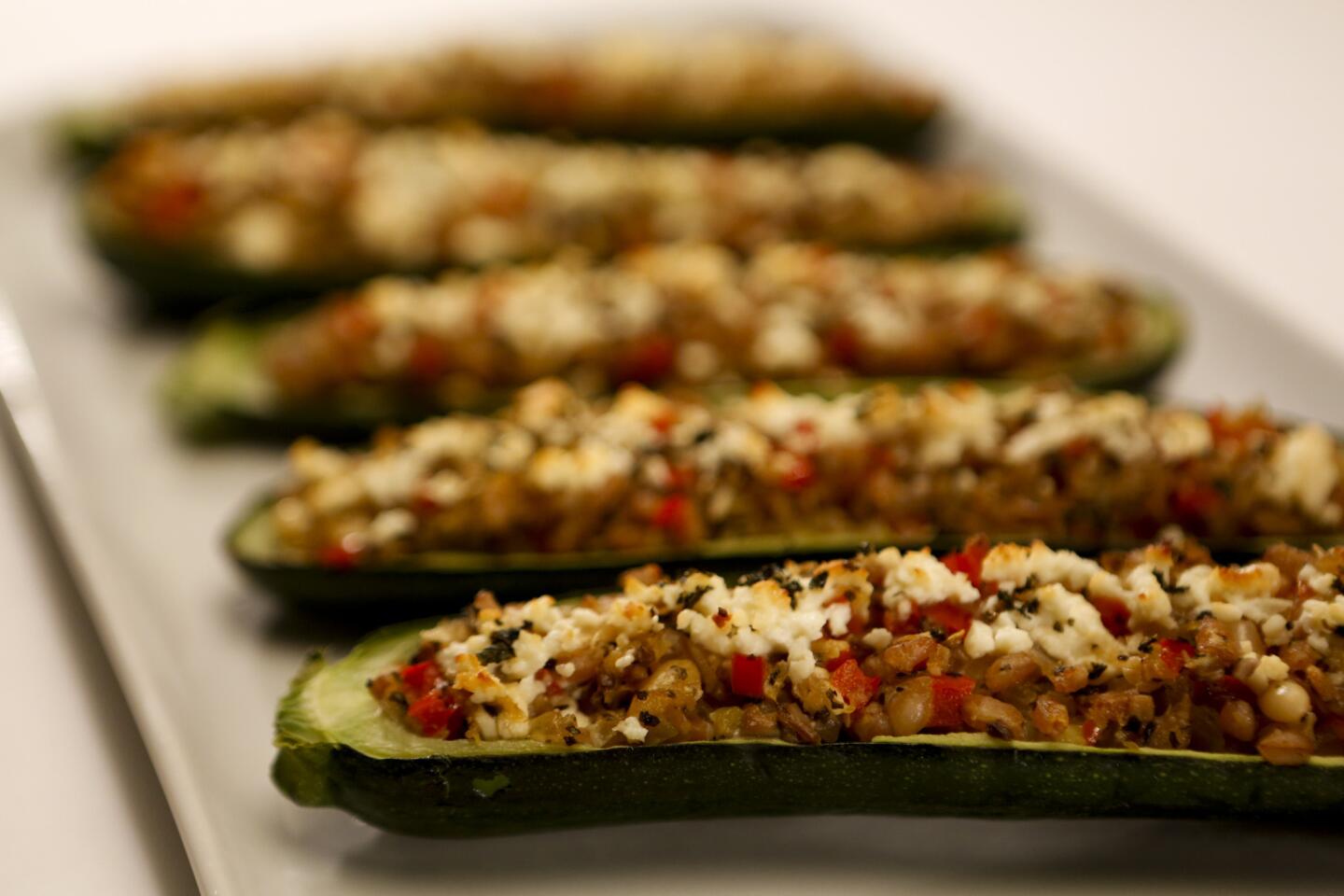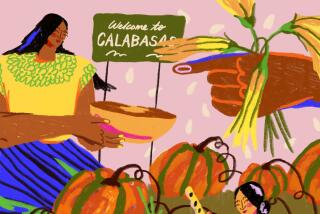Choose the best zucchini for the job, and 12 recipes for using them
- Share via
Did the zucchini originate in Los Angeles? Don’t laugh, as far as the United States is concerned, it might well have.
Zucchini today are so familiar that it’s easy to assume they’ve been around forever. But that’s not so. In fact, the first recorded mention of any zucchini anywhere was in 1901 in a Milanese seed catalog. The first American reference was in 1919 in a seed catalog for a Los Angeles company and within just a few short years, zucchini was a common topic in the Los Angeles Times food pages.
You’ll find old paintings that feature vegetables that look like zucchini, but they aren’t really. They are either cocozelle, an Italian summer squash, or vegetable marrow, popular in the Middle East.
Both are close relatives of modern zucchini and in fact, there are more than 100 varieties of zucchini grown today, ranging in color from gray-green to almost black and in shape from long and thin as a hot dog to bulbous.
Which to choose? It depends on how you’re going to use them.
Generally speaking, the more gray and bulbous a zucchini is, the firmer and milder the flesh will be. These are closer to what used to be called vegetable marrows, and they’re great for cooking in soups.
The darker and thinner zucchinis, closer to the Italian squash called cocozelle, are more tender but usually have richer flavor.
You’ll also find what farmers call “round” zucchini, varieties such as Tondo di Piacenza or Ronde de Nice. They’re not really zucchini but what botanists call “summer pumpkins.” Still, that’s probably something that matters more to botanists than to cooks.
How to choose: Look for zucchini that are small to medium-sized (no longer than 6 to 8 inches). They should be firm and free of nicks and cuts. Really fresh zucchini will bristle with tiny hairs.
How to store: Keep zucchini tightly wrapped in the refrigerator.
Are you a food geek? Follow me on Twitter at russ_parsons1
More to Read
Eat your way across L.A.
Get our weekly Tasting Notes newsletter for reviews, news and more.
You may occasionally receive promotional content from the Los Angeles Times.


